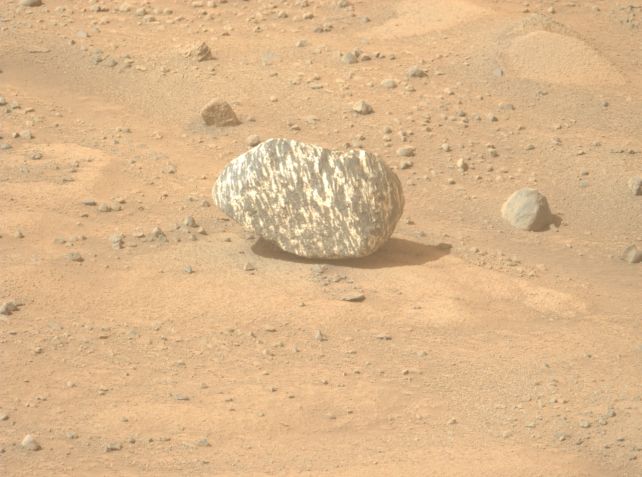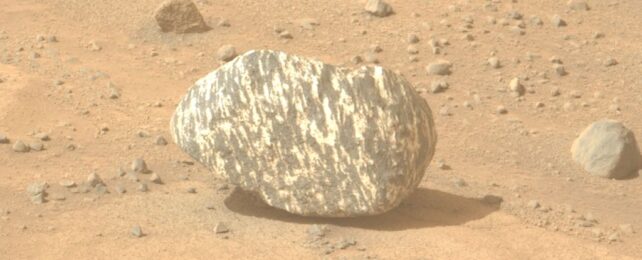If you haven't taken the time to look at a cool rock today, don't sweat it: we've got you covered.
In fact, this particular rock may even be one of a kind. It was discovered by NASA's Perseverance rover exploring the Jezero Crater on Mars, and we've never seen anything like it up there on the red planet.
To be fair, there's still a lot of Mars we're yet to explore in detail. Nevertheless, the zebra-striped chunk of rock is simultaneously surprising, fascinating, and, yes, you guessed it, extremely cool.
The rock was imaged on 13 September by Perseverance as it climbed the slope towards the crater rim. Like other interesting formations on Mars, the ground team here on Earth gave the rock a name: Freya Castle.
Freya Castle isn't very large; it's about 20 centimeters (8 inches) across, a little bit larger than the average length of an adult male hand. And its striking, zebra-like pattern of dark and light stripes poses an interesting mystery.

Perseverance used its Mastcam-Z to take a multispectral image of the rock before continuing its journey up the slope. From those images, scientists have made a few guesses about what the rock might be.
"Our knowledge of its chemical composition is limited, but early interpretations are that igneous and/or metamorphic processes could have created its stripes," writes planetary scientist Athanasios Klidaras of Purdue University in a blog post for NASA.
"Since Freya Castle is a loose stone that is clearly different from the underlying bedrock, it has likely arrived here from someplace else, perhaps having rolled downhill from a source higher up. This possibility has us excited, and we hope that as we continue to drive uphill, Perseverance will encounter an outcrop of this new rock type so that more detailed measurements can be acquired."
For now, that's about as much as we know about Freya Castle. But we also know it won't be the last cool rock that NASA's Mars rovers have to show us. Earlier this year, Curiosity found pure sulfur just hanging out in the Gale Crater.
And cheetah-like spots on a rock named Chevaya Falls are similar to mineral patterns here on Earth that are tied to biological activity. Chevaya Falls' pattern is more likely to be non-biological, but it's certainly fun to find something like that.
Here's hoping Perseverance finds Freya Castle's parent rock, so we can learn more about geological processes on a world so very different from our own.
